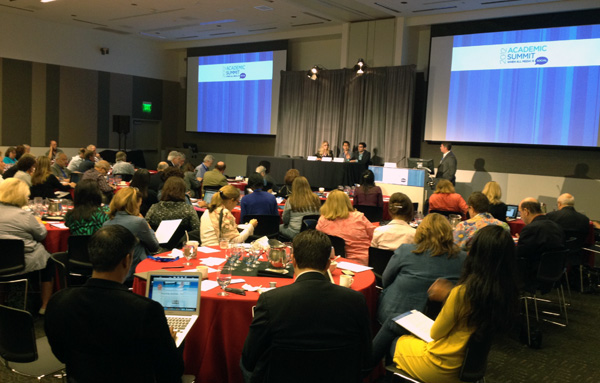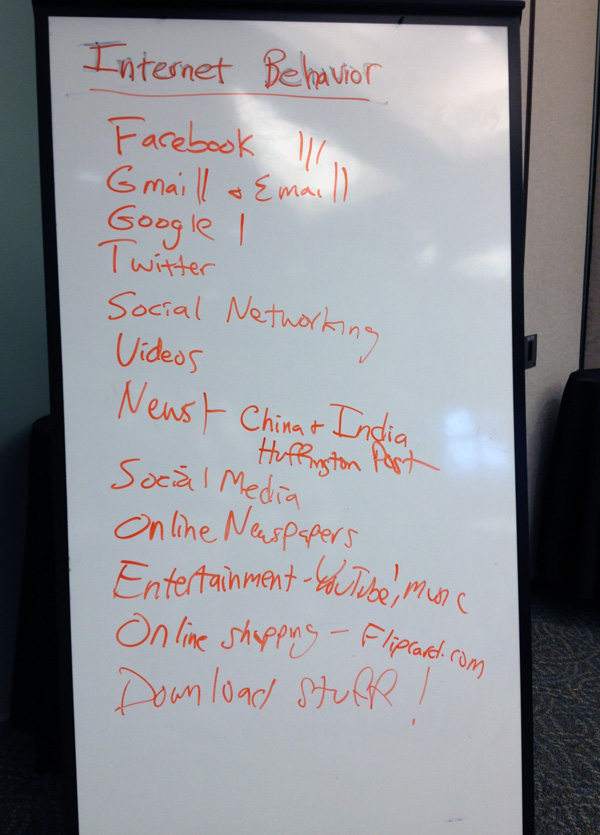The ancient Polynesian wayfinders would have been at home in Palo Alto, as the Academic Summit this June focused on media as now entirely social.

Storytelling for all forms of media -- including journalists and PR pros -- is both the central driver and the new shared, visual set of consumer expectations. Paul Saffo, managing director of Foresight-Discern, told media educators that there has been a fundamental shift from the producer economy, which promoted consumerism, to "The Creators Economy." It does not value intellectual property, but rather thrives on fans, iterative content creation and sharing across social spaces.
About 90 professors interacted in Palo Alto with 40 brand, media and digital thought leaders assembled for the fifth Academic Summit. The two conversations I've written about before -- old media chasing the social shift and disrupters surfing on new waves -- faced off in the three day event sponsored by Edelman PR, PR Week and Stanford University's MediaX project. For example, NPR EVP and chief content officer Kinsey Wilson told professors that public radio is being transformed by customized digital newscast organization and on-demand user access. At the same time, AllThingsD Co-Executive Editor Kara Swisher advanced the need to engage social readers.
I've attended the last three summits, and this was the most provocative since 2009. That Washington, D.C. conference coincided with the emergence of Twitter amid an uprising in Iran.
At the 2012 Academic Summit, Edelman's Jonny Bentwood (described as global head analyst and influential management) revealed that influence is not about popularity. Rather it happens within an online context. Communication professors should remember Elihu Katz and Paul Lazersfeld and their classic Personal Influence (1955) research, which essentially concluded the same about face-to-face interaction. We look to different opinion leaders when deciding to go to a movie, for example, than we do to determine the latest fashions.
Bentwood identified three key types of influencers: idea starters, curators and amplifiers. He said idea starters often leave an online conversation early and go on to something else. Curators help sift through the massive amount of noise online, and it is the amplifiers spreading influence. They often are responding to visual storytelling. By sharing, users go further and actively promote consumer brands. To the extent that our students also brand online identities, social exchange theory suggests that online interaction can be understood as barter. Communities develop in which there is a shared social exchange at work.
All of this requires PR professionals to use sophisticated analytics. Richard Edelman, president and CEO of the global PR giant firm, urged professors to teach data and analytics to communication students more inclined toward words.
Before going to the Palo Alto summit, I spoke to my university's Summer Immersion students from India, China, Norway and Germany. Despite cultural and language differences, their favorite online activities were remarkably similar -- social networking, video watching, online shopping.

The list of social media activities also looks similar to how my students from Omaha respond. The shift is global and happening very fast. All educators -- not just journalism and PR types -- need to understand, explore and shift teaching methods, models and delivery systems that adapt to the social media experience.
The 2012 Academic Summit offered many lessons, but some of the most important were: learn and use sharable visual storytelling; launch PR campaigns in key day parts (6 a.m., noon, and early evening); build trust through source URL transparency; make decisions based upon data; and teach the new job of social brand manager. This is someone who tracks online activity and manages branding in real-time, as mobile phone users may speak their minds from almost anywhere and at anytime. Consumers apparently are more than happy to exchange their data for free content. In other words, there is a "social exchange."
Thought leaders are suggesting, "privacy is dead." As Asif Kahn, founder and president of the Location Based Marketing Association, observed: "If you think privacy exists," you are imagining because "everything we do" is "opt-in." Mobile users are willing to be tracked, the Feedmagnet founder and CEO observed, because they want engaging experiences.
I think it is too early to be dismissive of potential legal challenges to the opt-in model. The largest problem is data control after a company with your data is purchased by another, larger firm. Facebook, which is approaching one billion users, is in possession of massive amounts of data. Yet, Congress, regulators and the courts lag behind in providing consumer protection at the opt-out point.
The other elephant in the room at the 2012 Academic Summit was the future of PR. As has been the case with journalism, the disrupters have no loyalties to older fields and practitioner models. Blending of traditional advertising, marketing and PR roles into new social media forms places professionals in competition for audience with outsiders. Academics are left to find "the way," design fluid courses and programs that have shelf life, and grow in this rapidly changing media landscape.
